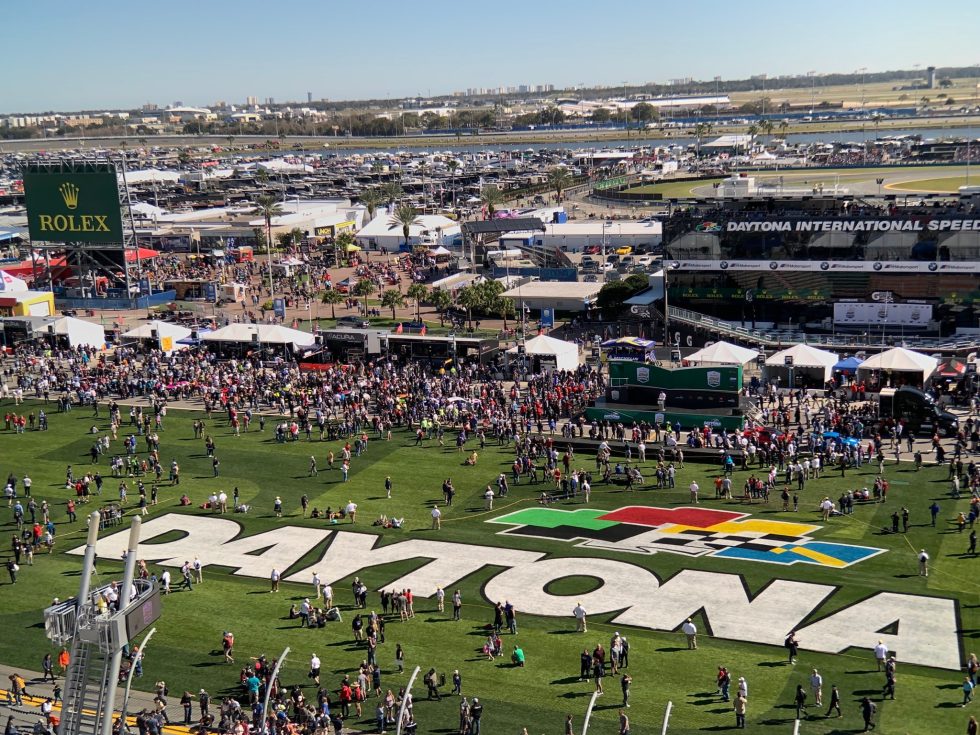-

There was beautiful weather and a big crowd on hand for the 2020 Rolex 24 at Daytona. [credit: Elle Cayabyab Gitlin ]
What a difference a year makes. In 2019, the Rolex 24 at Daytona could have more accurately been called the Rolex 14 because it rained so hard and for so long that there were 10 hours of red flag stoppages and safety car periods. The sports car community had a markedly better time of it in 2020—the last raindrops fell some time on Thursday, well before the green flag waved at 1:40pm on Saturday, with summer-like temperatures during the day that were welcomed by everyone who descended on Daytona Beach in Florida from places where winter remains in full effect. The racing was quite different from a year ago as well. It was less of a barnstormer, for one thing, with a noticeably smaller grid than in years past, and minus the international star power that is Fernando Alonso—the former F1 double-champ decided to start his racing year by competing in the Dakar rally, instead. That's not to suggest a bad time was had—far from it.
Who wants to race to France?
The biggest news for the weekend actually happened before the race got underway. As mentioned in my pre-race article, talks have been ongoing between IMSA—which runs the WeatherTech Sportscar Championship (of which the Rolex 24 is a part) and the ACO, the French organization that controls the 24 Hours of Le Mans. On Friday, the two groups held a press conference to announce that the next iteration of the DPi prototype race cars—due in 2022—will now be called LMDh (for Le Mans Daytona hybrid) and will compete against the ACO's new Le Mans Hypercar at the world's biggest race. (Sorry Indy, the 500 is still only the world's largest single day sporting event.)
LMDh will use a homologated carbon fiber chassis from the same four manufacturers that produce the current DPi carbon fiber tubs. OEMs will still be free to use their own engines and electronics, and the cars will have much more road car-like styling, similar to Le Mans Hypercars. There will be a common hybrid system that recovers and deploys kinetic energy at the rear wheels, although beyond that, the technical details remain a work in progress. The upshot of this news is that the factory-supported prototypes fielded by the likes of Cadillac, Acura, and Mazda will be eligible to compete at Le Mans for an overall win, something that many sports car fans have been wanting to see since the dieselgate-powered implosion of the mighty LMP1-H category.
No comments:
Post a Comment